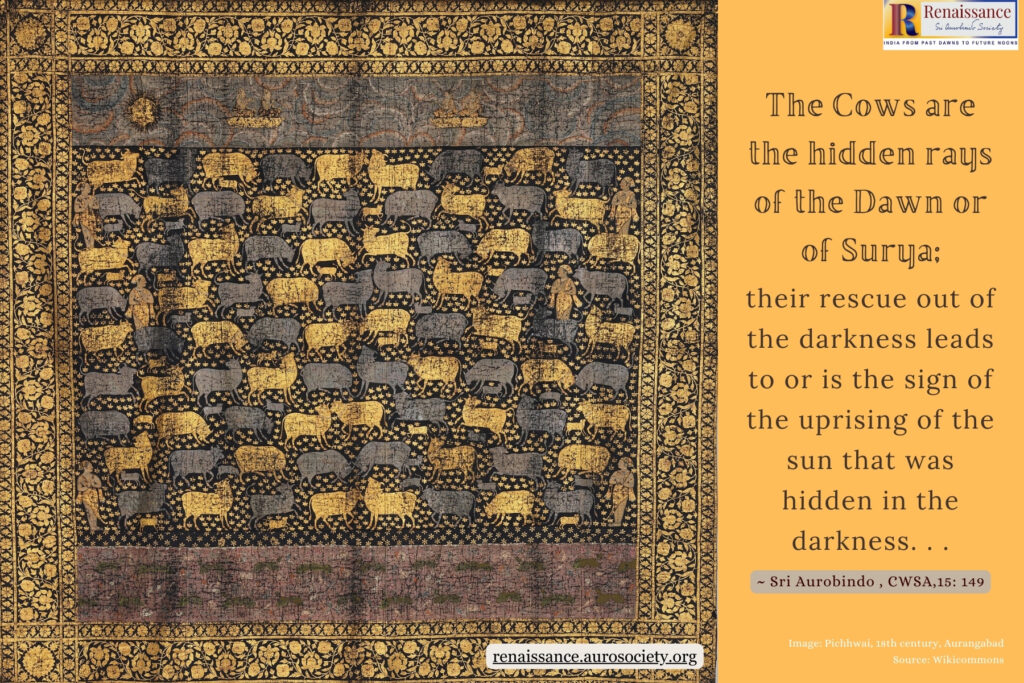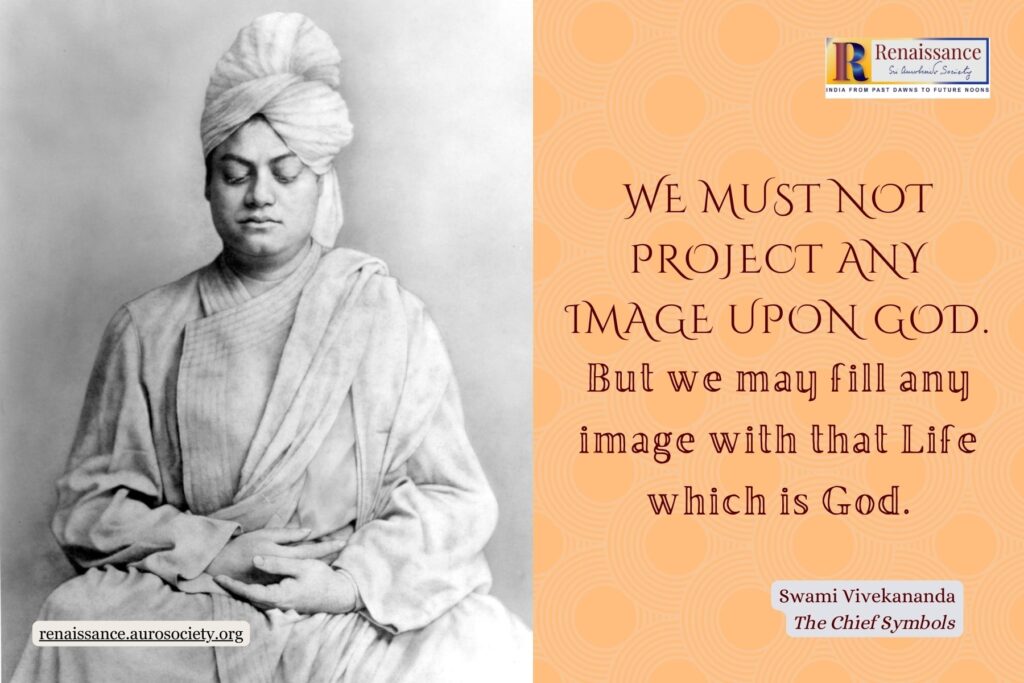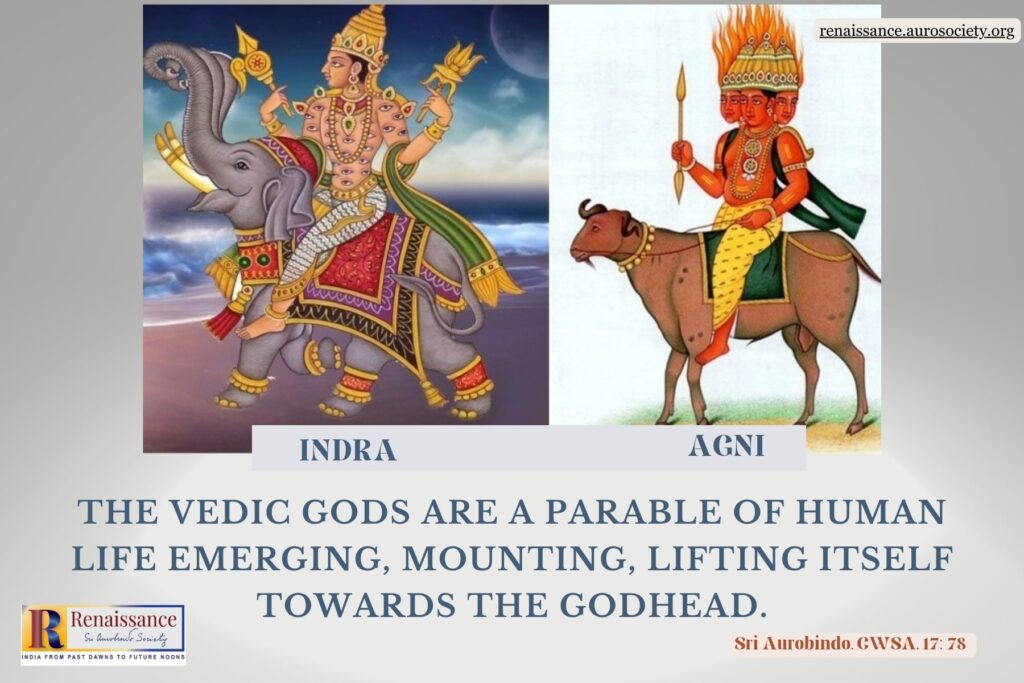Continued from Part 10

We all know that walking is one of the best and safest exercises with innumerable health benefits. But has it occurred to you that your walk mirrors your state of mind? When one is angry or agitated, one tends to walk heavily and very fast; when one is in a light mood, the step is light and one skips along; in extreme joy, one tends to almost run. This itself brings out the fact that how one walks determines the overall benefits walking provides.
Our ancestors knew many time-tested psycho-spiritual therapies which have been handed down the ages. Walking, jogging and running, have all been used traditionally and purposefully by them, often combining them with a deeper psychological or spiritual intent, which actually increased the health benefits manifold.
Padayatra, a Panacea for All-Round Health

The slow parikrama done in temples, the quick step with which a pilgrim moves on his or her yatra, the tradition of Shivalaya Ottam or Shiva temple run in Tamil Nadu, where the devotees literally run, the meditative walk of the parivrājaka, all are connected directly to walking and health — physical, mental and spiritual.
(pic source: Wiki commons)
In olden days, yatras were undertaken on foot and often took months. This boosted the health, brought discipline and had the added advantage of spiritual well-being.
Today, with sedentary lifestyles, one needs to go for a walk in a very deliberate manner! More and more people are taking to exercises, following videos offered by ‘fitness experts’ or attending online classes. When exercises like jogging, zig-zag walking and such are done indiscriminately without paying heed to individual needs and constitutions, they can cause discomforts and disorders, sometimes even triggering new health problems.
Also, what people often in the fitness craze is that walking has more than just physical benefits for the body. Our ancestors clearly understood this when they came up ritualistic practices which involved walking and conscious movement.
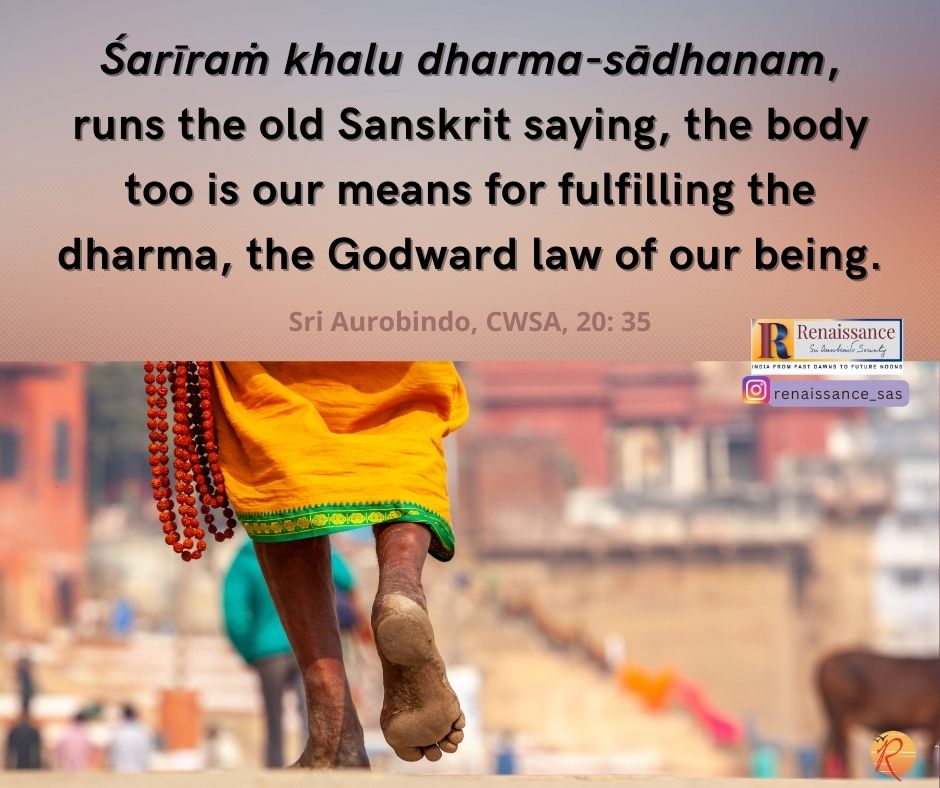
Some Examples
Let us take a look at some of the traditional padayatras that are still being undertaken by countless devotees in our country. We begin with the parivrājakas (wandering sanyasis). Theirs is a kind of vratam, like ćaturmāsya sankalpam and ajnatavasa, which entail solitude and tapas combined with seva, but with the same aim of rejuvenating and cleansing afforded by the latter two.
A parivrājaka becomes a parivrājakācārya or a wanderer-teacher in due course, disseminating knowledge as he or she goes along. Parivrājakas don’t stay in one place and usually stay away from dwellings. They sustain themselves on bhiksha (alms) taken from the villages they pass through and camping in the open or in temples. This is walking combined with a spiritual purpose, which in turn exalts the parivrājaka’s spiritual power. Even in this day and age, we follow the noble path and teachings given to us by divine parivrājakas such as Buddha and Swami Vivekananda.
Buddha, the parivrājaka
Born a prince, Siddhartha who later came to be known as the Buddha, he was deeply disturbed seeing the suffering and misery around him and left his home in search of the Truth. It was not easy. For months and years, he was engrossed in tapasya, unmindful of hunger and thirst and his surroundings. And then one day, sitting under a bodhi tree, he saw the Light within – a realization of the Truth. In that instant, the cause of all human misery became clear to him.
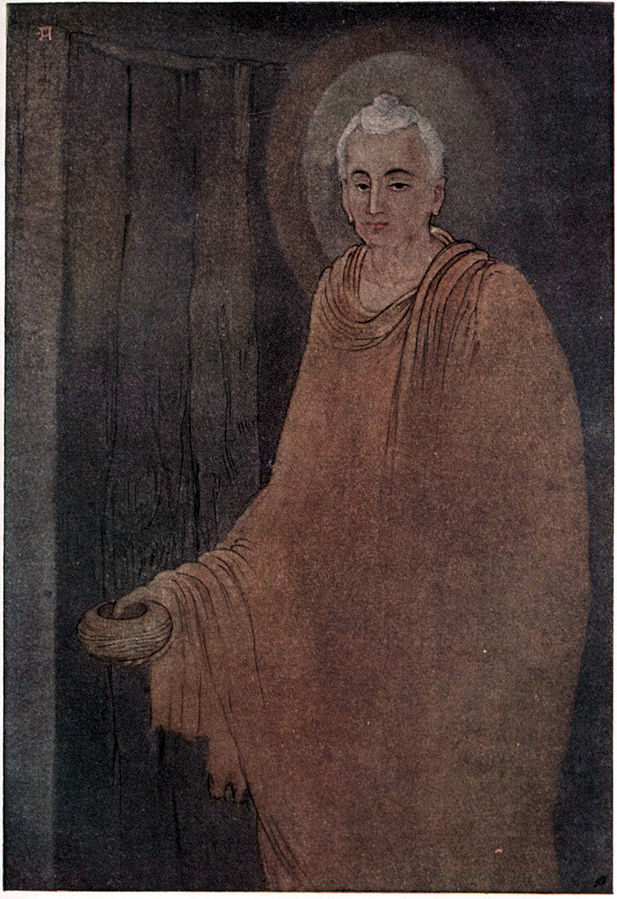
Thereafter he never stayed in one place. He became a parivrājakācārya, preached and spread the message of the Eight-fold Path of Dharma. On his wanderings, many who were attracted by the aura around him listened to his teachings and became his followers. They were called bhikshus and bhikshunis, who renounced family, and worldly pleasures to spread the path of Truth wherever they went.
(painting by Abanindranath Tagore; source: Wiki commons)
The bhikshus practiced ahimsa towards all living beings, helped people in distress and performed seva filled with mercy for all living beings without distinction. They also lived close to nature, as they wandered all over the country, utilizing the healing properties of the panćabhūtas effortlessly, maintaining a sound physical, mental and spiritual health.
Buddhism continues to have walking as an important spiritual practice, with even walking meditation undertaken by the practitioners.
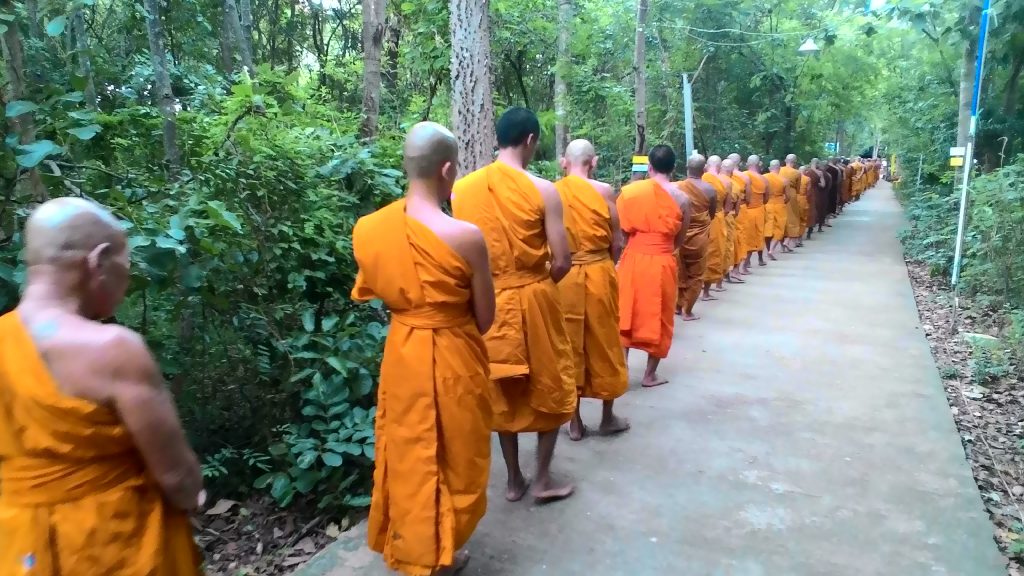
Swami Vivekananda, the Mendicant
Swami Vivekananda was another notable parivrājaka, closer to our times, who worked ceaselessly for the spiritual and mental wellness of the nation. He had become a parivrājaka after being initiated into sanyāsā by his Guru Ramakrishna Paramhansa, who gave him the work of spreading the essence of Sanatana Dharma in all directions.
After Sri Ramakrishna attained samādhi, Swami Vivekananda went abroad—to the US, England and Europe, spreading his message of Sanatana Dharma. His address at the World Parliament of Religions at Chicago in 1893 is well known. He asserted that the world is a big family and Hindu dharma espouses universal love and compassion for all living beings. His message was aimed at the whole world and held universal appeal. Inspired by his speech and call for selfless, dedicated persons to join him in this mission to spread peace in the world, many came forward to become his disciples and followed him later to our country.
But in his own motherland he had to face a lot of criticism. He was accused of misguiding the youth of the country, with his ideas about making Bharat a great nation. They targeted him and ridiculed our dharma, deities, heritage and culture. Swami ji was a great Kali bhakta; the attitude of his countrymen pained him a great deal. He meditated for long hours, often through nights. He wandered a lot and became a parivrājaka with a few of his disciples, but often alone, for he wanted to meditate and walk in solitude.
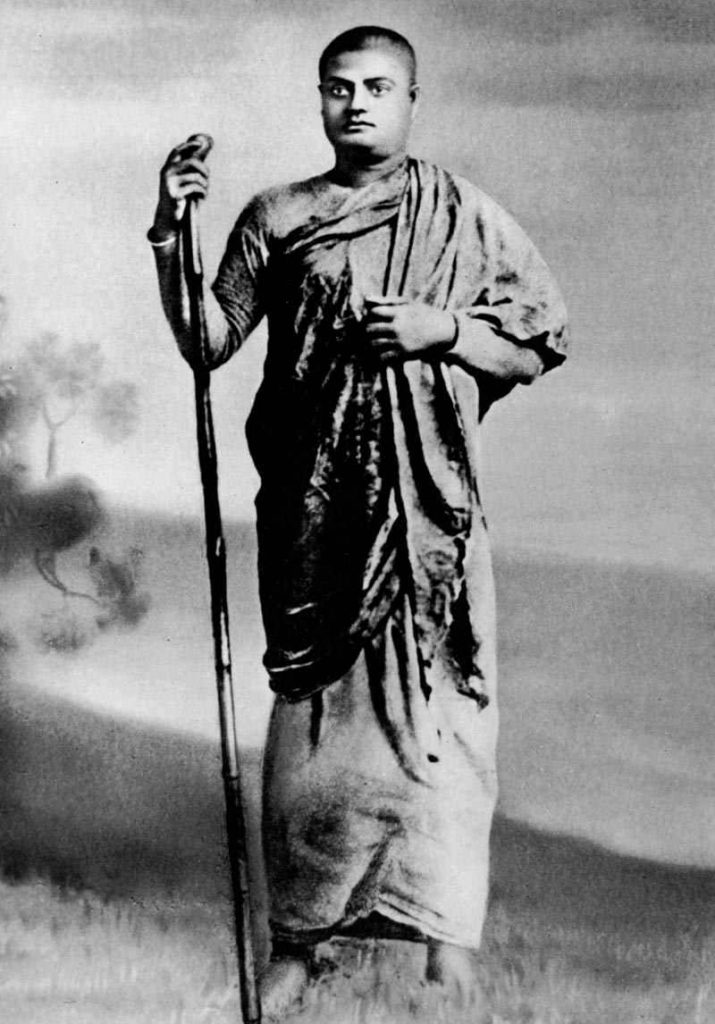
From our archives:
Sri Aurobindo’s and the Mother’s Force for Healing
He went alone to Kanyakumari, at the southernmost tip of India, to find answers to the questions troubling him. Once there, the sight of the vast ocean touching the horizon, the divine sangam of the Arabian Sea, Bay of Bengal and the mighty Indian Ocean instantly calmed his mind. He was spellbound by the serene beauty of the sangam, with the waves of all the three bodies of water rushing to touch, meet, and salute the sacred feet of Bharat Mata.
He was inspired to meditate in this place but with people thronging to meet him, he didn’t find the solitude to do it. So, he jumped into the water and swam till he reached a rock. He was engrossed in deep meditation for days, months. . . no one could say. It is believed that Devi Parvati blessed him, her ardent devotee, on this rock, as She is also believed to have done tapas on this rock which to this day bears imprints of Her feet. The rock has been named Vivekananda Rock.

After this agnyatavasa, Swami ji returned to Belur Mutt with enhanced spiritual force and power. His daily teachings to his sanyasi disciples of the Sri Ramakrishna Mission, which he had founded, were full of inspiring dharmic wisdom. More and more young and old brahmacharis joined the mutt to become his shishyas. The motto of the Mission was to spread literacy, help people in times of calamity and do seva in other ways. It was a fine blend of philosophy, service and devotion.
The Buddha and Swami Vivekananda were parivrajakas in different eras and served humanity in different ways. Both understood the need for the spiritual solitude that wandering afforded them to enhance their spiritual energies.
Warkaris of Maharashtra
But there are other kinds of wanderers too, who undertake padayatra with an aim to gain spiritual merit. They are the yatris, not the kind who hop into planes and cars and take the cable car to the top of the mountain to ‘visit’ a temple, but those who walk miles and miles, observing austerities, doing vratams and chanting names of their beloved deities as they walk. Such walking is beneficial for the physical health as well as the spiritual wellbeing of the devotees.
The Warkaris of Maharashtra belong to this group of yatris. Every year they undertake this wari (yatra) from all across Maharashtra. They start on Krishna paksha Ashtami of the month of Jyēṣṭha and end on Āśāhadh śukla pakśa Ēkādaśi at Pandharpur, carrying the padukas of various saints, notably Sant Tukaram Maharaj’s padukas from Dehu and Sant Dnyaneshwar’s from Alandi.
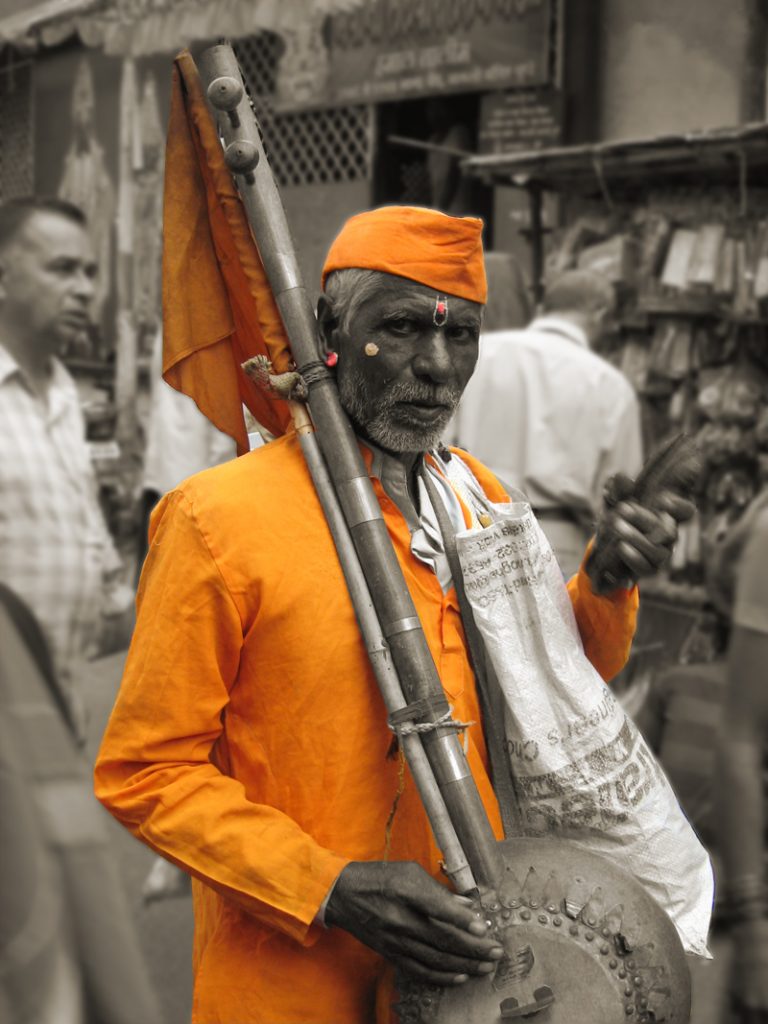
Also read:
When Śabdam Helps to Disperse Noxious Vāyu
They walk in groups or dindis, chanting and singing bhajans and kirtans, with a bundle or a small trunk on their head holding their essential items. Since the wari is undertaken during the monsoon months, the food carried by them is simple and easily digestible, with fruits and uncooked eatables to last for the duration of the wari. Once at Pandharpur, they bathe in the sacred Chandrabhaga and after darshan of their beloved Vithoba and Rakhumai, partake of the prasadam.
During their wari, they follow the custom of the parivrājakas and do not enter anyone’s house, spending their nights at temples or dharamshalas or even in the open in a tent. Some carry their deities along with them, performing puja every day before proceeding. Some devout warkaris follow Sant Tukaram’s dhava or running of the last few kilometres from Velapur, to the Vithoba temple at Pandharpur. The saint had been so overcome with emotion sighting the spire of the temple from the small hillock in Velapur, that he had run all the way to be close to his beloved Vithoba.
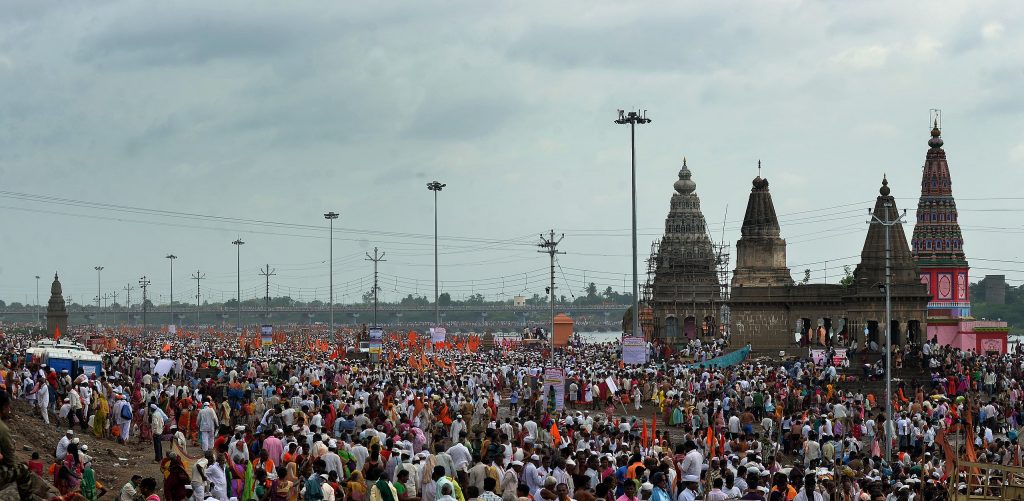
Don’t miss:
Panća Mahābhūta and their Role in Wellness
This annual ritual renders emotional well-being to the warkaris, in addition to the physical discipline of keeping with the dindis (groups) and following the timings etc. It enhances their faith in their Vithoba which helps them address calmly their problems such as sickness, financial difficulties, etc. As they stand in front of their Lord, they surrender themselves to Him and return with renewed faith, fully energised physically and mentally.
This yatra is believed to be over 800 years old and many modifications and changes have taken place over the centuries. What remains unchanged is the devotion and faith of the warkaris in their beloved Vitthal and Rakhumai.
We will take a look at a few more padyatra traditions from India in our next article.
To be continued. . .
Read previous parts?
Part 1, Part 2, Part 3, Part 4, Part 5, Part 6, Part 7, Part 8, Part 9, Part 10

~ Cover image: Rishabh Sharma

